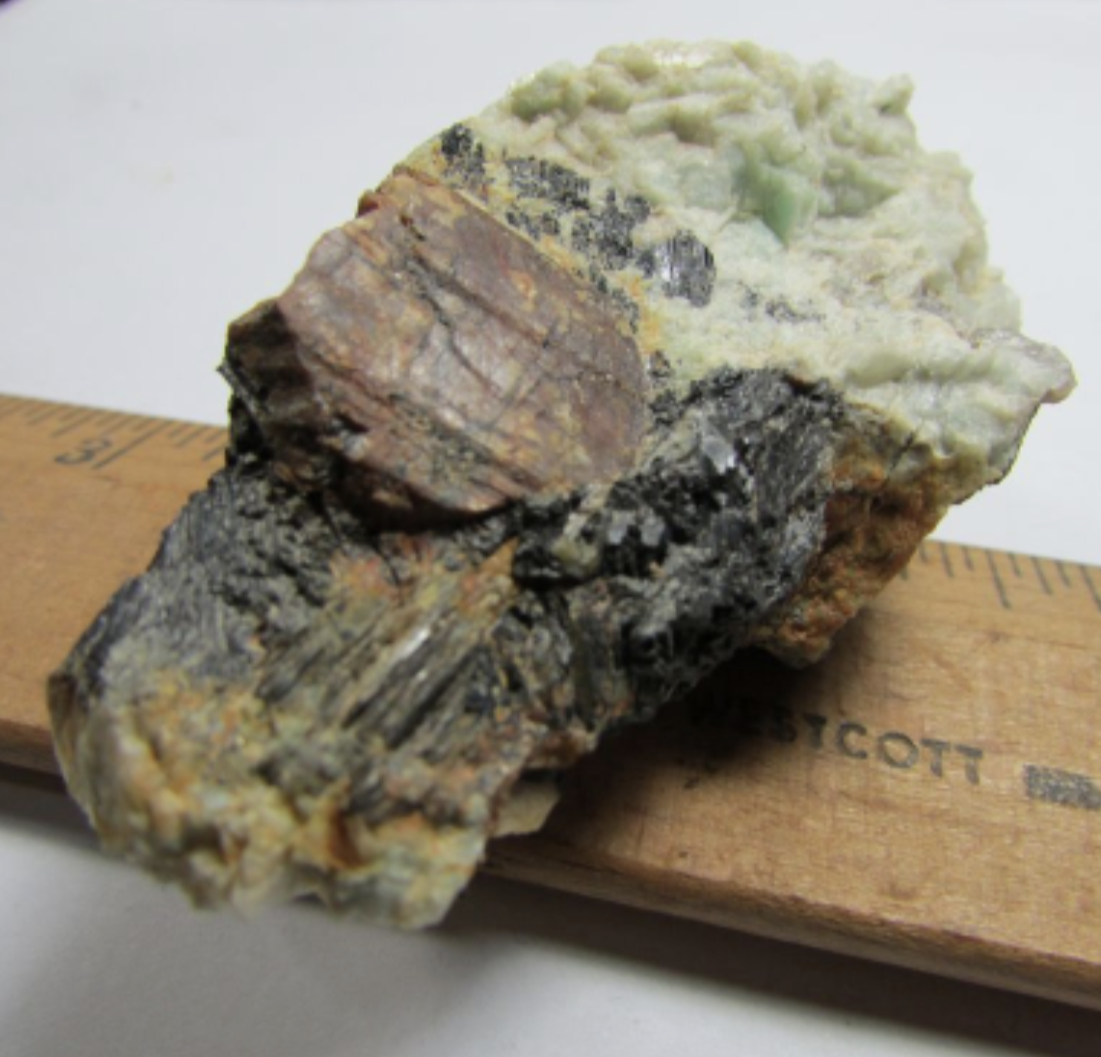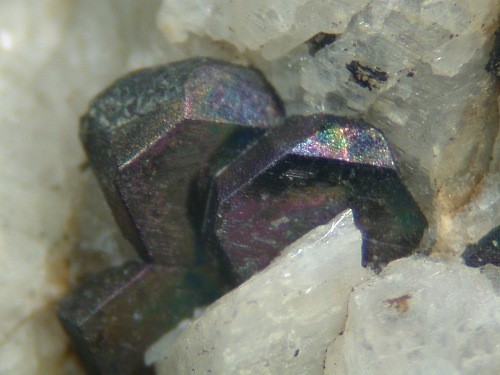 I can scarecely go a week without seeing an article about the international race to find--and mine--rare earth elements. That begs the question: since Morefield mine has been up for sale, why hasn't it been snapped up, to acquire its minerals with rare earth elements?
I can scarecely go a week without seeing an article about the international race to find--and mine--rare earth elements. That begs the question: since Morefield mine has been up for sale, why hasn't it been snapped up, to acquire its minerals with rare earth elements?
Background
Morefield mine is a pegmatite--and the majority of rare earth elements are found within pegmatites.
Rare earth elements definitions vary, but often include scandium, yttrium and the 15 lanthanide elements (lanthanum, cerium, praseodymium, neodymium, promethium, samarium, europium, gadolinium, terbium, dysprosium, holmium, erbium, thulium, ytterbium, and lutetium).
As you can see in Elements at Morefield Mine, the mine has produced 15 out of the 17 rare earth elements; thus far, promethium (which is produced in nuclear reactors, and thus has not been found in nature) and lutetium are the only two exceptions. And given that most minerals containing yttrium also contain very small amounts of lutetium, chances are that Morefield has lutetium as well--the only barrier being testing of enough samples to locate it.
 Monazite is one Morefield mineral containing rare earth elements, such as cerium, lanthanum, neodymium, promethium and samarium. Fergusonite -(Y), Fluorite and zircon are a few others. In this sample, monazite is the broken ruddy brown crystal near the center.
Monazite is one Morefield mineral containing rare earth elements, such as cerium, lanthanum, neodymium, promethium and samarium. Fergusonite -(Y), Fluorite and zircon are a few others. In this sample, monazite is the broken ruddy brown crystal near the center.
So back to the question: is Morefield valuable enough in rare earth minerals for it to be viable?
The answer is both simple and complex.
 The simple answer: it's been tried--not exactly with rare earths, but with other mission-critical elements like tantalum (important in cell phone capacitors, medical implants and other uses). This example of tantalite is a mineral with tantalum.
The simple answer: it's been tried--not exactly with rare earths, but with other mission-critical elements like tantalum (important in cell phone capacitors, medical implants and other uses). This example of tantalite is a mineral with tantalum.
Here's the description from MorefieldGemMine.com, used with permission.
Mr. Morefield operated the mine by open cut methods from 1929 until 1931 when it was leased by the Seaboard Feldspar Co. and mined for amazonite, beryl, mica, and tantalite for about 3 years. Mr. Morefield resumed operations then leased it to Minerals Separation North American Corporation in 1942. This company was taken over by the Metals Reserve Company, and they returned the mine to Mr. Morefield in 1943. The Metals Reserve Company was a government agency under the Reconstruction Finance Corporation that was in charge of the national stockpile of “strategic and critical materials” for the WWII war effort and national mineral security. The critical minerals at the Morefield Gem Mine were mica, beryl, and tantalum minerals.
The U.S. Bureau of Mines first explored the deposit during the summer and fall of 1943 during which time they drilled four diamond drill holes and excavated four trenches crosscutting the pegmatite. Then two more definition diamond drill holes were drilled and an additional trench added.
In 1948, the U.S. Bureau of Mines returned to the mine and conducted experimental development and mining at which time they deepened the shaft to 115 feet; conducted underground diamond drilling to establish the wall rock/pegmatite contacts; drove a drift 75 feet at the 100-foot level; and extracted a large bulk sample by selectively shooting long drill holes (‘longholes’) in the high-grade part of the pegmatite. The purpose of this work was to test underground methods of mining pegmatite should mica, beryl, and tantalum become in critical supply.
See also: Virginia DoE report on tantalum
The complex answer: it's been found wanting--too much downside for not enough upside.
1) The concentrations are not high enough.
The current quantities identified have been too thin. Unless further exploration produced richer ore, the effort to mine these elements, as minerals, could not be justified at the current values.
A significant portion of the Morefield property has been long-term leased to Martin Marietta, a subsidiary of Lockheed Martin, which has 5 quarries in Virginia, including one in Amelia County, where Morefield mine is located. The use for the Morefield land is as a storage area for overburden from other mining operations. The bottom line is this: if a mining company with the resources behind it like this one would prefer to use the land for storage, there's "nothing to see here."
2) The downstream impacts of rare earth mining are too high.
Per Northwestern University (2023),
Neodymium and other rare-earth metals can be separated from monazite through solvent extraction. Using a nonaqueous (not water-based solvent) solution such as Cyanex 923, a liquid phosphine oxide, scientists can extract neodymium from the mineral.
According to the Harvard International Review (2021), “Mining produces toxic waste in the form of dust, gas, wastewater, and radioactive residue. For every ton of rare earth, 2,000 tons of toxic waste are produced.”
A significant justification--probably at the federal level--would be required to mount these barriers. And that justification would probably require significantly higher contents of ore than have currently been identified at Morefield mine.
But that's not the end of the story: Enter "EarthMRI". The US Geological Service is doing aerial MRI throughout Virginia, including the Amelia area. If this newer technology uncovers REEs at Morefield, this story could change on a dime.
See also:
Virginia DoE report on Critical Minerals
Virginia DoE report on Rare Earth Elements
______
Photos:
Monazite - A broken monazite xl (20x15x10)mm in a matrix of schorl & albite. Morefield pegmatite, Amelia County, Virginia. Collected by Stan Rudis, photo & owner Mark Joseph Wylie.Type: Photo - 1000×750 (0.8 Mpix). Used with permission.
Tantalite - Tantalite crystal (2mm) on cleavelandite matrix, Morefield Pegmatite, Amelia County, Virginia. Photo by Betsy Martin, collected by Mark Joseph Wylie, summer of 2001. Type: Photo - 500×375 (0.2 Mpix). Used with permission.
©️2021 to present, Valutivity Press. All rights reserved.